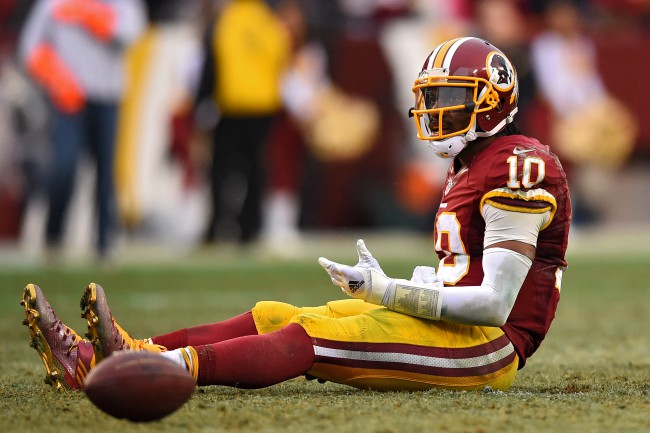Heading into the 2015 NFL Draft, one storyline stands out above the rest: the two quarterbacks at or near the top of everyone’s draft boards. One of them is a near-lock to go No. 1 overall, while the other’s landing spot largely depends on who trades up the highest to pick him (and it looks like he’ll go No. 2 in that case).
If you switched the year in the above paragraph from 2015 to 2012, everything would still be true. Andrew Luck was a sure thing to be picked No. 1 overall by the Indianapolis Colts, but the Rams had the second pick and weren’t looking to draft another quarterback. So they traded their pick to QB-desperate Washington for a king’s ransom.
If the Titans indeed do trade out of that second slot, they can only hope that the deal will benefit them as much as its precedent did for St. Louis, which picked up multiple starters on rookie contracts to help build a deep and talented roster. And of course, whoever trades up to the second pick does so with the hope that they get more than what Robert Griffin III has given Washington.
The initial trade sent the second pick from St. Louis to Washington in exchange for the sixth and 39th overall picks that year and Washington’s first round selections in 2013 and 2014. While it would have been fun to see the Rams stand pat with all those first rounders and see what kind of top-level talent they could amass, St. Louis was determind to get value and depth. So with the four picks they acquired from Washington, here’s what other moves they made (according to Pro-Football-Reference‘s Trade Finder):
- Traded the 6th overall pick in 2012 to the Dallas Cowboys (who selected Morris Claiborne) for the 14th and the 45th overall picks
- Traded the 45th pick in 2012 to the Chicago Bears (who selected Alshon Jeffery) for the 50th pick and a fifth-round pick
- Traded the 22nd overall pick in 2013 (received from the Redskins) and a 2015 seventh-rounder to the Atlanta Falcons (who selected Desmond Trufant) for the 30th overall pick, a third-rounder and a sixth-rounder that year
- Traded that sixth-round pick and their own sixth-round pick that year to the Houston Texans for a fifth-round pick
So, to recap: the Rams acquired four picks from Washington for the pick that would become RGIII, and turned those into six picks (once you factor in other picks they gave away). Here’s who they drafted with those picks, and what those players have contributed to the Rams thus far:
DT Michael Brockers, 14th pick, 2012
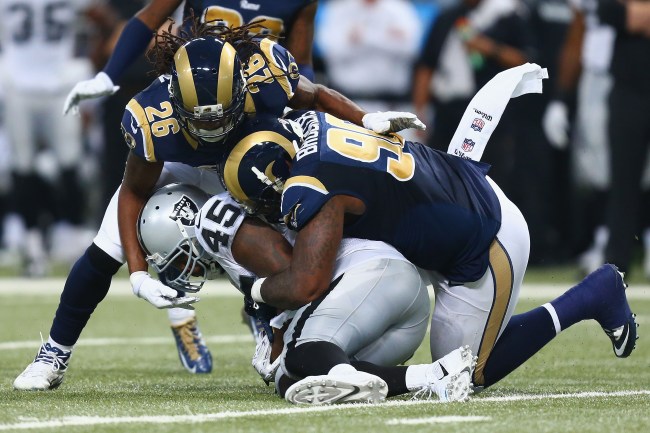
Brockers has started all 16 games for the Rams each of the past two years at defensive tackle, and has been a relatively positive force in run defense. He’s perhaps the least-heralded member of the excellent Rams’ defensive line, with studs Robert Quinn and Chris Long on the outside, and complete monster Aaron Donald the other starting defensive tackle. However, all three of those players (along with new free agent acquisition Nick Fairley) are considered pass rush specialists (though Donald is just a wrecking ball all around, and a sleeper candidate for DPOY), so Brockers should get some of the credit for the Rams’ defensive line being ranked third last year against the run by Football Outsiders. He’s also still only 24 years-old, so he has lots of room to grow.
CB Janoris Jenkins, 39th pick (second round), 2012
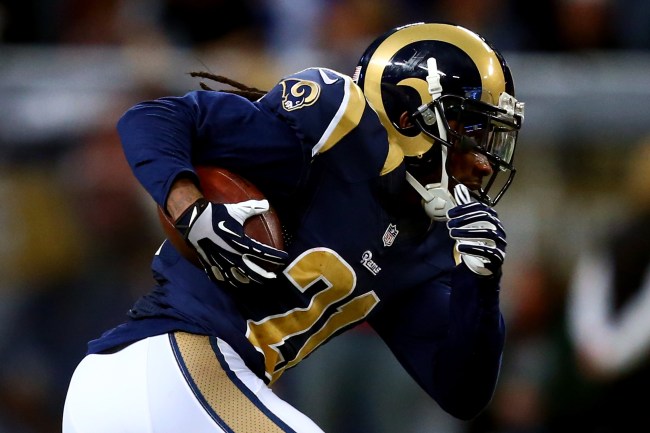
Jenkins, like Brockers, has been a starting cornerback for the Rams since he was drafted, and like Brockers, he’s been average-to-good over that time. However, Janoris doesn’t have the benefit of being surrounded by elite teammates at his position, often guarding the opposition’s number one receiver. Ideally, the Rams could find a top-flite corner to pair with him, as he would be one of the best second cornerbacks in the league. He’s not a shutdown corner, but he’s been serviceable, which is decent value from a second round pick who, again like Brockers, still could improve.
RB Isaiah Pead, 50th pick, 2012
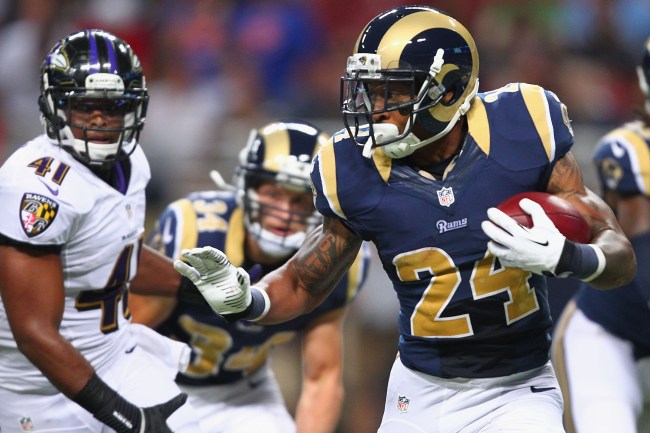
Pead has been largely a non-factor, totaling 17 carries in his first two seasons before tearing his ACL in the 2014 preseason. His career isn’t over yet, but so far it’s been a story of missed opportunities. In Pead’s rookie year, he was behind workhorse Steven Jackson on the Rams’ depth chart in Jackson’s last year with the team. Isaiah was expected to step up in 2013, only to see a different running back (who we’ll see further down this list) surprise everyone by usurping Pead’s starting role and becoming an every-down back. Pead’s ACL tear took away his opportunity to recapture some snaps last year, but he’s still under contract for the Rams entering training camp, despite having an uphill climb to make the team.
OL Rokevious Watkins, 150th pick (5th round), 2012
Was cut by the Rams coming out of training camp his rookie season.
OLB Alec Ogletree, 30th pick, 2013
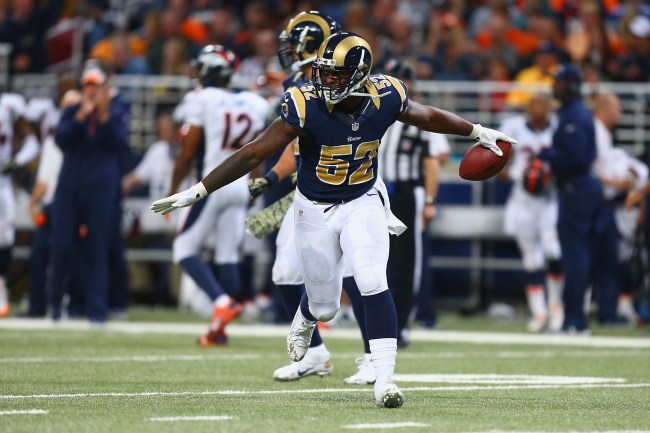
Ogletree has also started every game for the Rams in each of the last two seasons, which in this case, means he’s started every game since he was drafted. Ogletree has been an above average linebacker so far in St. Louis, showing more aptitude than most linebackers for pass coverage (with 12 passes defended last year) while being a little easy to push around in the trenches. Still only 23, he’s shown more than enough at this point in his career to instill confidence that he can be a solid starter for years to come.
WR Stedman Bailey, 93rd pick (third round), 2013
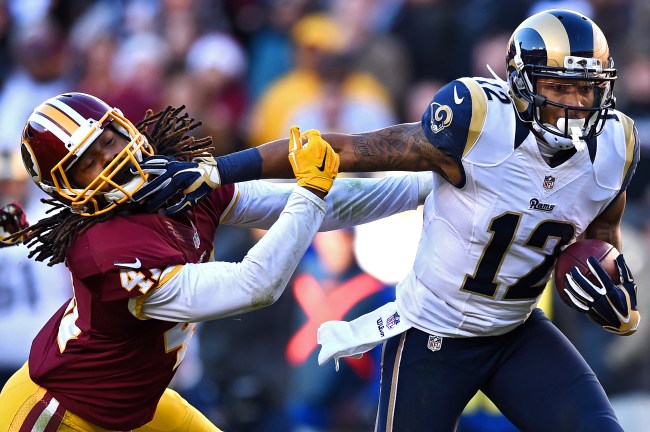
Bailey has been part of the consistently-disappointing Rams receiver crew the last couple of years, failing to distinguish himself among such luminaries as Chris Givens, Brian Quick, Tavon Austin and Kenny Britt. He’s only 5’10” and under 200 pounds, so he’s physically suited to a slot role. With Sam Bradford out — on purpose this time, not because of injury — and Nick Foles in, Bailey (and the rest of the Rams’ WRs) will be under pressure to perform this year and prove that the Rams’ punchless passing attack was due to quarterback play more than a lack of talent. Also, he returned exactly one punt last year, and it was one of the greatest trick plays you’ll ever see. So he’ll always have that.
RB Zac Stacy, 160th pick (fifth round), 2013
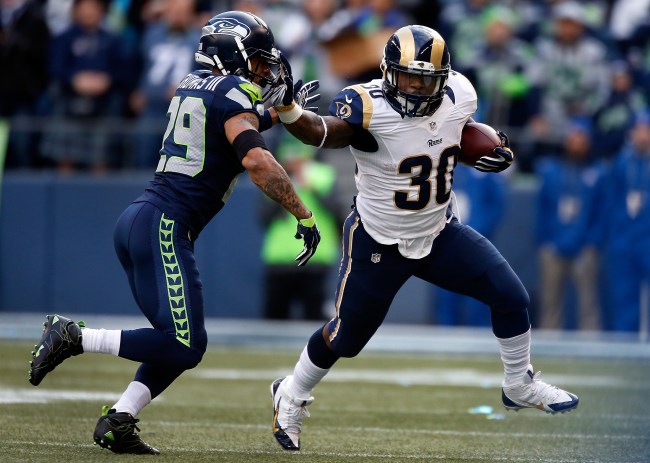
Stacy decided a lot of fantasy football seasons in 2013 when he surprised everyone by running away with the starting job over Isaiah Pead and Daryl Richardson. His short, stout build allowed him to bull through contact, even though he lacked any semblance of elusiveness. His success was short-lived, however, as in 2014 he was subjected to the same whims of head coach Jeff Fisher that benefited him originally — rookie Tre Mason was the new hotness last year, while Stacy (of the career 3.9 yards per carry) was relegated to the backup role to which he always seemed destined. Who knows what 2015 holds for St. Louis running backs, but if the trend continues, chances are whoever you draft in your fantasy league won’t be the guy who winds up in the backfield. Maybe it’ll be Pead, who knows?
OT Greg Robinson, 2nd pick, 2014
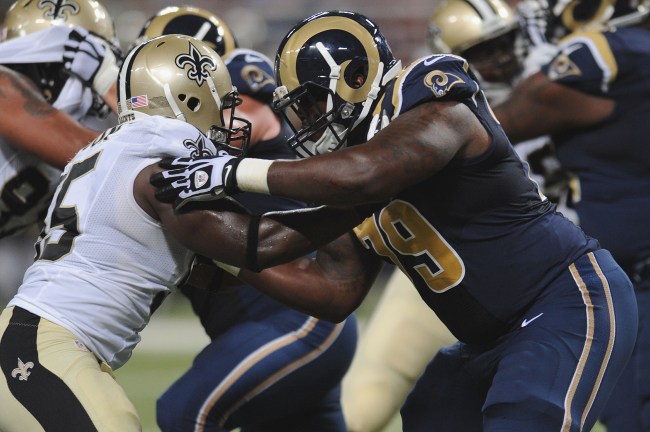
Of all the picks Washington gave up, losing the No. 2 overall in the 2014 draft had to hurt the most. Though Aaron Donald, who the Rams drafted with their own pick, was the jewel of their draft, they were still able to pick up their supposed left tackle of the future in Greg Robinson. The one problem was that Robinson was pretty bad last year. According to Pro Football Focus, Robinson was one of the absolute worst tackles in the game in 2014, especially in pass protection. He was a rookie, so of course he will be given every opportunity to improve (and pass blocking is a more difficult transition from college than run blocking). If he does, then the trade that brought him to the Rams will go down as possibly the most lopsided in NFL history.
***
So the Rams traded one pick and wound up with three defensive starters, a running back who had one solid year before falling off, and an offensive lineman who hasn’t shown anything yet, but still could. What the Rams still don’t have, however, is a franchise quarterback (unless you believe more in Nick Foles than I do). But does Washington?
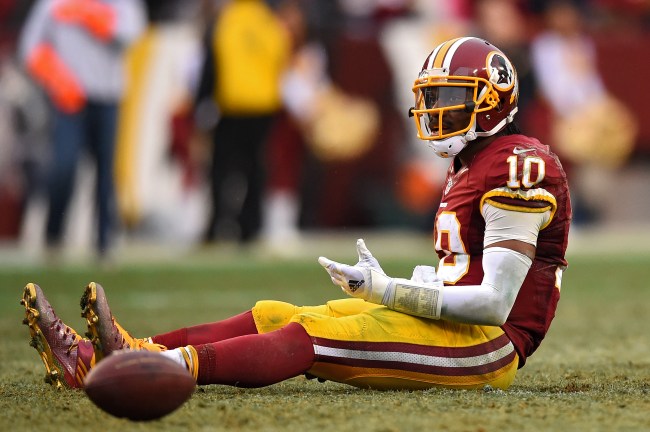
Obviously, the easy answer is “no.” Since RGIII’s spectacular rookie campaign, he has been injured, ineffective, embattled, injured again, and ineffective again. And even more embattled. It’s fair to wonder if Washington and its organization (combined with the fanbase) have damaged Griffin mentally as much as or more than the game damaged him physically. His talent is still immense, and maybe it’s hopeless optimism to think he can put it all together. But for whatever reason, I can’t bring myself to count him out. Maybe if he can get lucky and avoid the injury bug this year, he can finally find enough of a rhythm to make reads and throws with confidence.
If RGIII can, against all odds, return to franchise QB form, it still won’t make the trade to get him even, but it might make it worth it. Either way, this deal provides a hell of a cautionary tale for any team considering trading for that second pick. (Cough cough, Browns cough)

